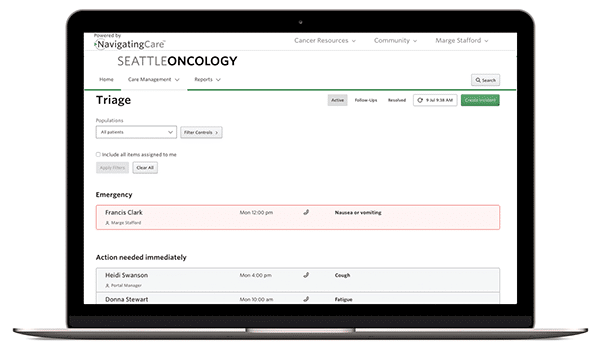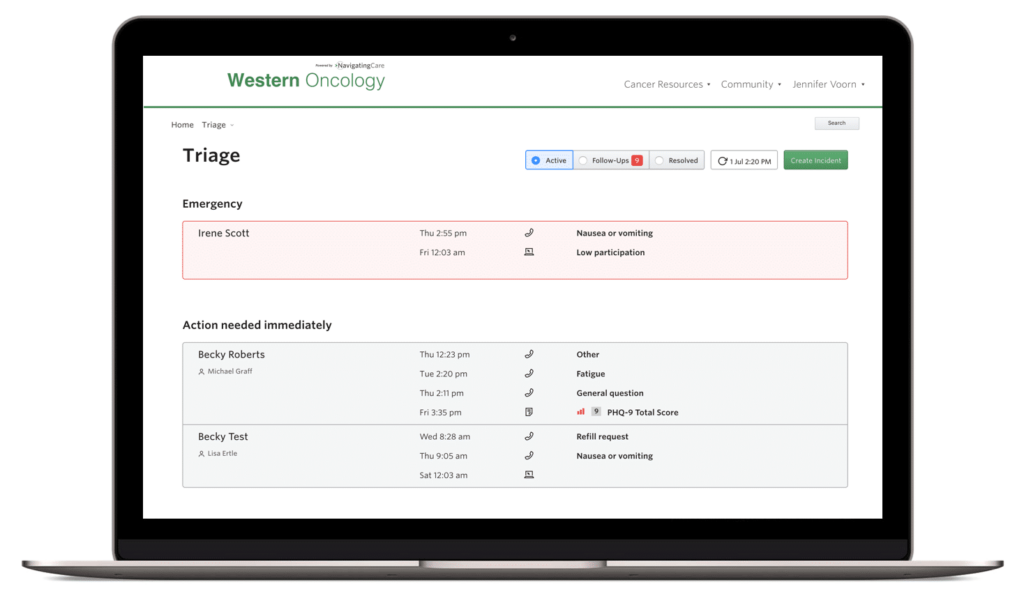 Over the past year Navigating Cancer has seen interest in our Patient Relationship Management platform (PRM) continue to grow at a rapid pace. Just this year we have added hundreds of providers and their care teams to the platform. They rely on our PRM to facilitate proactive and consistent care for patients when they are not in the clinic. It features a triage system with symptom management pathways, remote monitoring and industry-leading patient engagement tools and those tools are growing in importance as the reality of value-based care sets in.
Over the past year Navigating Cancer has seen interest in our Patient Relationship Management platform (PRM) continue to grow at a rapid pace. Just this year we have added hundreds of providers and their care teams to the platform. They rely on our PRM to facilitate proactive and consistent care for patients when they are not in the clinic. It features a triage system with symptom management pathways, remote monitoring and industry-leading patient engagement tools and those tools are growing in importance as the reality of value-based care sets in.
Value-based programs like the Oncology Care Model are revealing that preventing unnecessary emergency department visits and hospitalizations may be the only path to success. In order to do that coordinated, proactive care management is essential, as evidenced by early data from practices using Navigating Cancer’s PRM.
PRM technology results in cost savings and better patient experiences
When care teams use our system to help patients manage symptoms and other needs, they can indicate whether the intervention they provided prevented an urgent care visit. In just three months, one practice reported 511 emergency department visits were definitely or probably prevented. Currently on average, about 3% of patients managed using our PRM avoided the ED due to timely intervention by their care team. And we expect that number to continue to grow.
New practices have gone live on Navigating Cancer’s system every month since January and we are seeing very high rates of utilization. We know many practices are evaluating technology solutions to improve the care they provide, but are hesitant to add another tool or make any changes to their workflow. In order to understand what practices experience when they start managing day-to-day patient needs with our system I sat down with one of our Clinical Success Managers who helps clinics be successful using our system.
What is the biggest challenge to implementing a new workflow?
Change is hard. As clinicians we are use to things working a certain way and when things are out of order it can cause chaos. Each day we are seeing a large volume of patients in a limited amount of time. If one thing is off, the entire day can spirial and then care is delayed for everyone. Whenever there is a change in workflow there is a slowdown period as people are learning the new workflow and working out the kinks.
What’s your advice for overcoming it?
I try to encourage everyone who will be impacted to embrace change. Just like medicine, the gold standard of care changes. Embrace the change and help improve the workflow instead of just saying no.
How have you seen our software solution make a difference for care teams?
There’s an ability for better care coordination. Anyone in the clinic can now see why that patient called. Voicemails are no longer piling up in the wrong place. Instead the entire care team can see why a patient is calling, how often and when. This allows them to work together to provide better care and responses to meet the patients need.
How have patients reacted to the changes?
Just like clinicians, patients have to be trained on the process as well – so informing patients of the change in process is important. However at one practice I work closely with, I’ve heard reports from triage nurses that patients are telling them that they are being called back in a more timely matter and they are receiving better care as there’s someone dedicated 100% to symptom management and is not distracted by patient care in the infusion room.
Contact us for a demonstration!
Navigating Cancer’s Patient Relationship Management platform is a flexible solution that can help your care team members work at the top their license, deliver proactive patient care and reduce costs. Contact us today if you would like to learn more.
